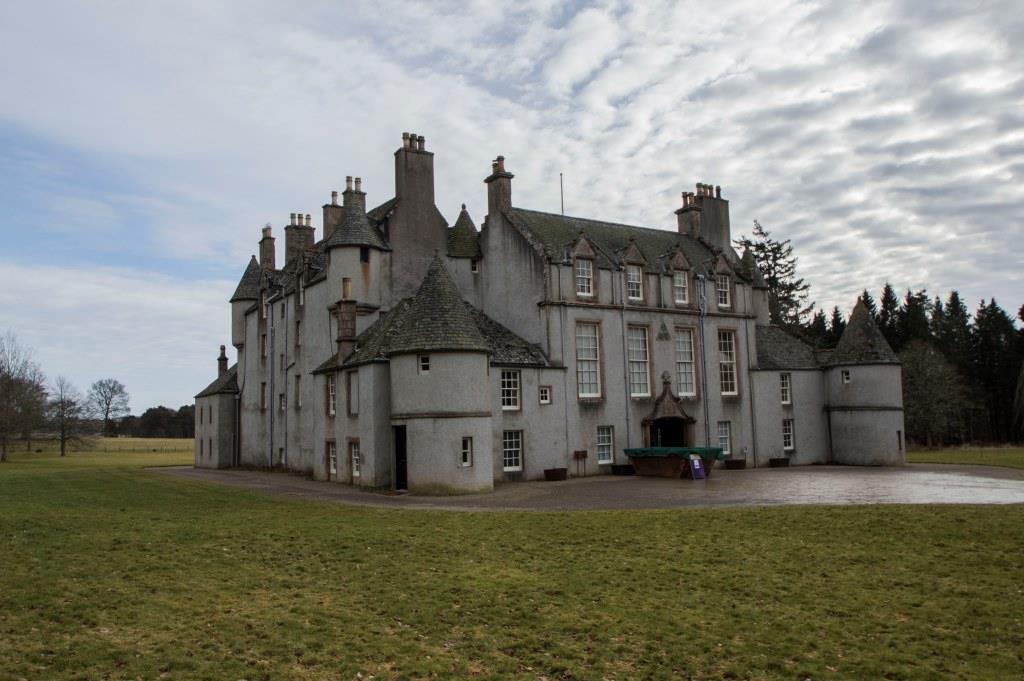Leith Hall

Leith Hall Details
Leith Hall, an impressive C17 house of the Leith-Hay family on the site of earlier castle. National Trust for Scotland.
- Closest To: Kennethmont, Rhynie, Huntly
- Access: Chargeable Public Access
- Grid Reference: NJ541298
Leith Hall is a large multi period mansion built upon the site of, and perhaps including parts of, an earlier castle. It is built on the south facing slope of a Knockandy Hill, overlooking minor tributary of the Water of Bogie; the land around it is boggy making the site naturally well defended, although overlooked by higher ground.
The oldest part of the castle is the north wing, which is said to have been erected in about 1650 by James Leith of New Leslie lands which had been purchased by his father John a few years beforehand. The lands in question are described as the “lands and mill of Syid, with the Peill” which is a reference to the Peel Tower of Syid which stood on the site until at least 1605 and appears as “ye Peill” on Gordon’s map of Strathbogie c1636-1652.
It is therefore quite possible that the Peel of Syde was still standing when the lands were purchased by John Leith, and formed a significant part of what was to become the first phase of Leith Hall. This consisted of a rectangular three storey tower with turrets at each corner, and probably had a barmkin courtyard wall.
This courtyard was later enclosed by subsequent blocks dating from 1756 (east wing) and 1797 (south wing), both erected by the Leith Hays, and finally the west wing with its drum towers added in 1868. The 18th century additions were also decorated with turrets, but these were removed, perhaps with the erection of the last wing.
The building of this substantial mansion, together with the general declines in the Leith family fortune, resulted in what looked like an untenable position for the laird, Alexander Leith in the 1780s. His grandfather, John Leith, had married Mary Hay of Rannas in Banffshire, and help came in the form of a substantial loan of money Mary’s brother, laird Andrew Hay, a famous Jacobite, who fought at Culloden and hid at Leith Hall afterwards. While he was in hiding his own house at Rannas had been destroyed, and in 1781 he had sold the estate to the Earl of Seafield for over £22,000. With no heirs of his own, he was happy to lend his great-nephew the money to secure the Leith Hall estate. Alexander chose to honour this by taking the name Leith-Hay, which his descendants also kept.
Used as a hospital during the First World War, the house sold to the National Trust in 1945, and it is today open to the public courtesy of the National Trust for Scotland during the season.
Official National Trust for Scotland page
HES Canmore database entry
